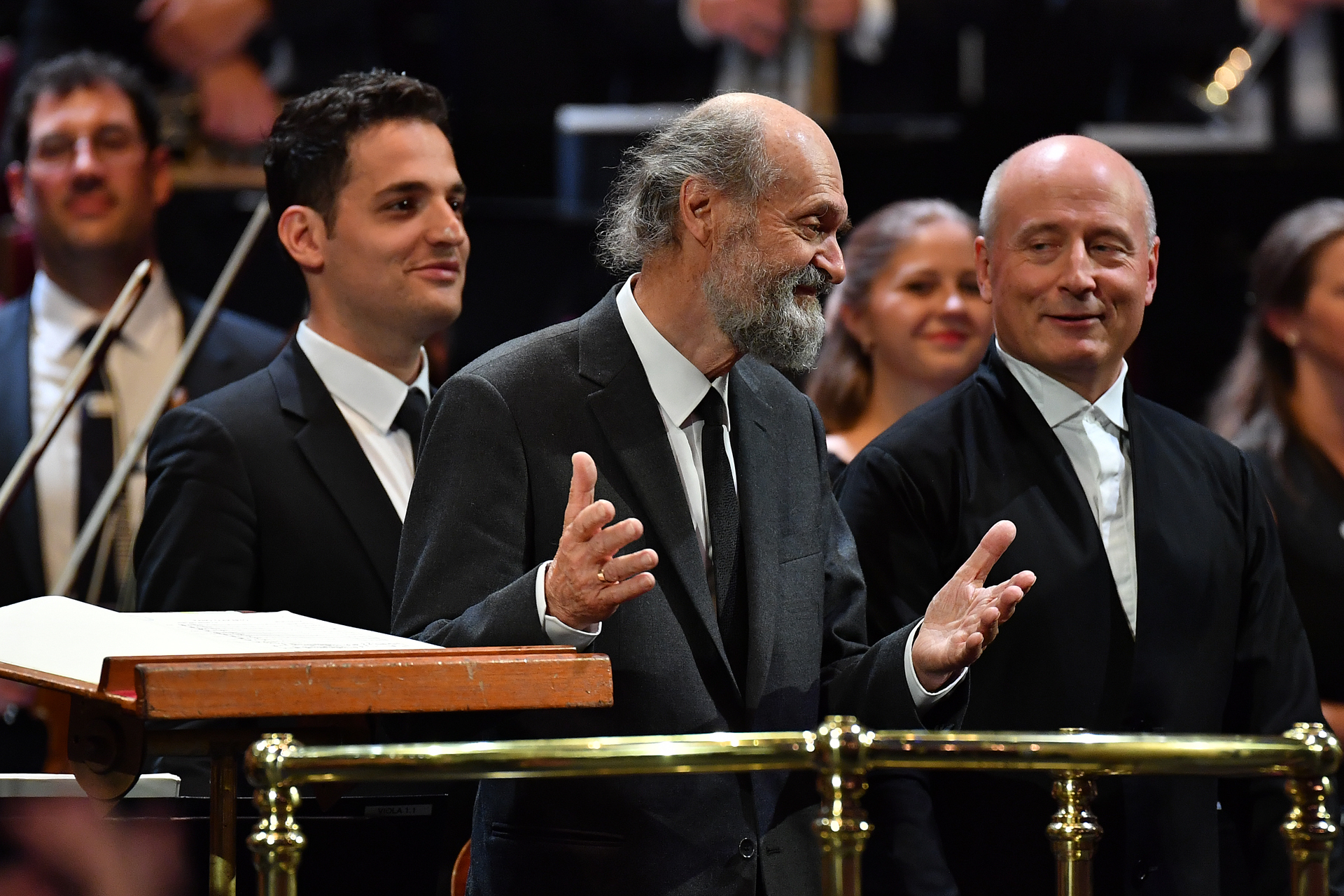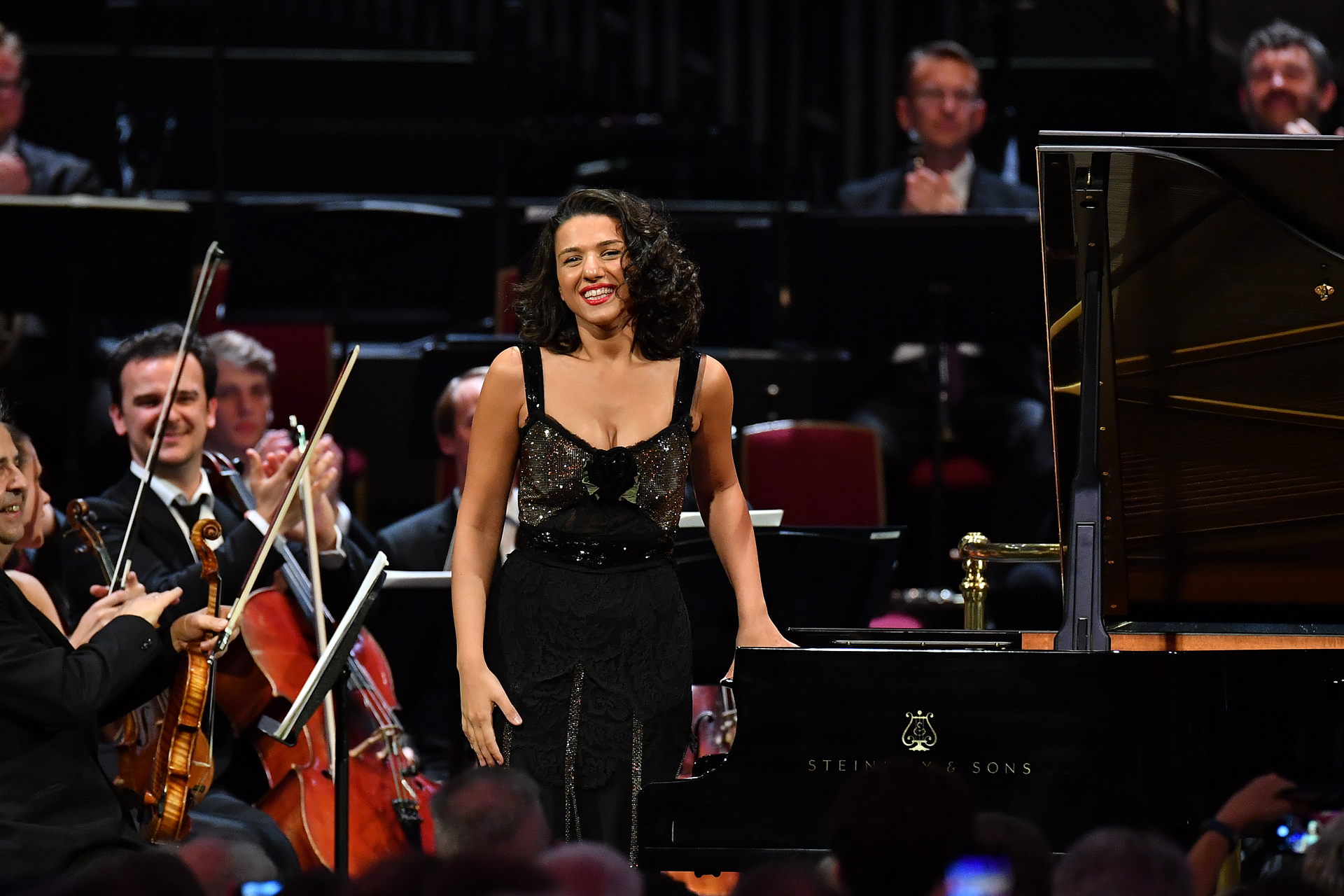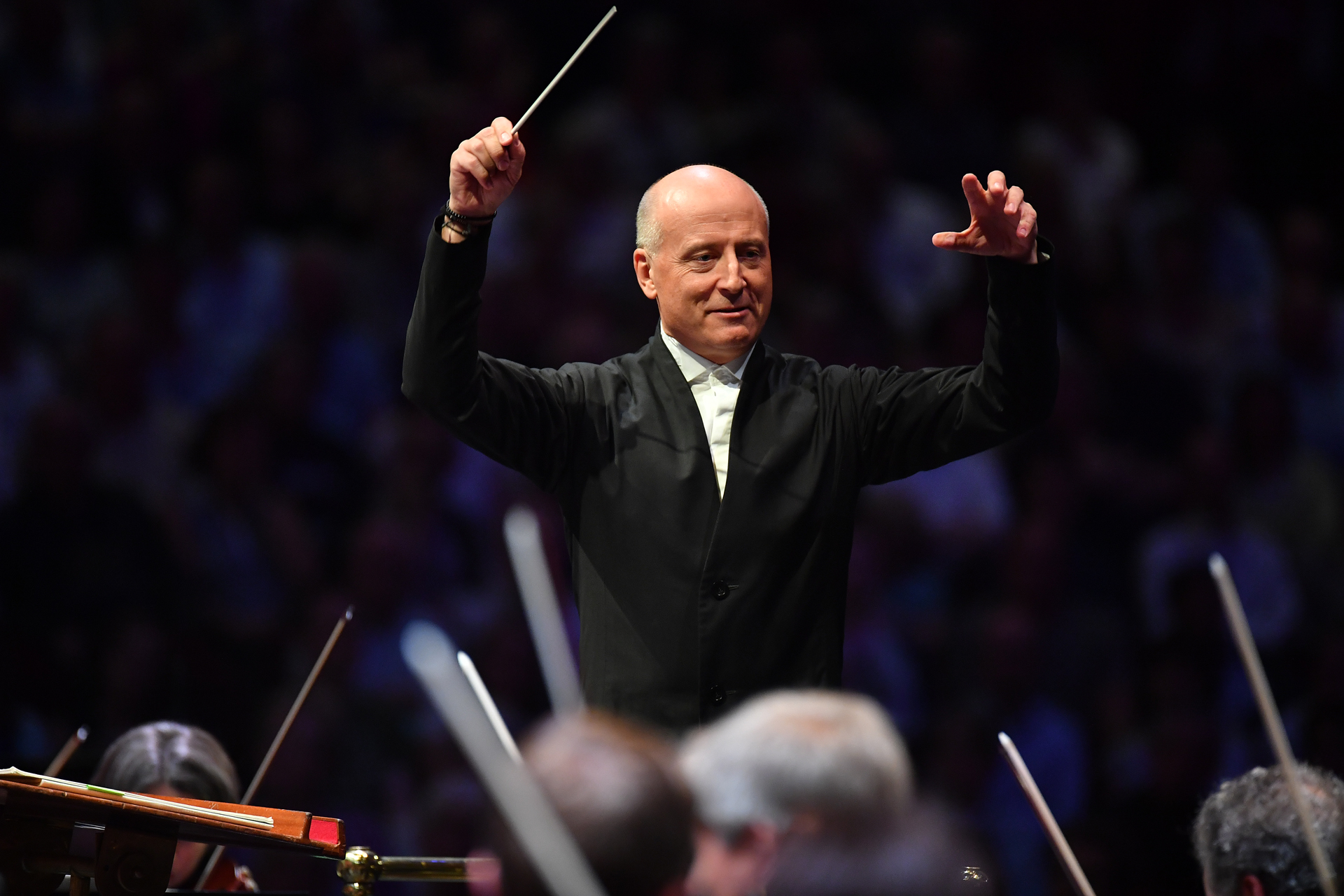Prom 42, Buniatishvili, Estonian Festival Orchestra, Järvi review – bright lights from the North | reviews, news & interviews
Prom 42, Buniatishvili, Estonian Festival Orchestra, Järvi review – bright lights from the North
Prom 42, Buniatishvili, Estonian Festival Orchestra, Järvi review – bright lights from the North
A first-rate ensemble wrenches beauty from the abyss
Music-lovers who normally balk at the sight of national colours in a concert hall would surely have forgiven the little Estonian flags – in stripes of blue, black and white – that waved happily at the conclusion of this Prom.
In his sure hands, and with the support of this strikingly impressive ad hoc band that combines young local players with visiting luminaries from top European orchestras, this was a programme that both ravished the ear and exercised the mind. Järvi and his ensemble, first created in 2011 for the summer festival in Pärnu - this year's experience was described yesterday on The Arts Desk by David Nice - sounded consistently fine, with no weak links and zero sense of an impromptu scratch band playing on the hoof. The presence of the young Georgian pianist Khatia Buniatishvili as soloist – another huge talent from a small-ish post-Soviet republic – set the scene for an evening of big, but never brash, noise from the little guys. All questions of history and identity aside, the Estonians evoked a proper sense of occasion in playing that married festive warmth and zest with unflagging focus and discipline. 
Sudden instrumental shapes and figures mysteriously crystallise out of rapt silence or low repeated motifs in the strings. If Pärt’s tolling of tubular bells transport us to the monastery cloister, then the instrumental cries that float above the emptiness – clarinet, oboe, trumpets – suggest the plaintive loneliness of a soul that has mislaid its faith. Finally, a great percussive thunderstorm proclaims the day of judgment already hinted at a “dies irae” motif in the brass. If Pärt’s “tintinnabuli” theory of composition still remains (to some of us at least) opaque, then these slowly cumulative series of raids on the void built into an austerely beautiful cathedral of sound. 
From her express-train introduction onwards, Buniatishvili offered plenty of old-school drama and lyricism (more so, perhaps, than any Nordic pianist these days). For me, though, the beating heart of the performance arrived with the adagio, where she conjured up a radiant, sunset stillness perfectly offset by the Estonians’ gorgeous strings. The orchestra’s rustic tavern stomp of the finale paved the way for Buniatishvili’s flamboyant farewell – a thrillingly enjoyable sign-off, no doubt, but one that left me wondering what another sort of pianist might have crafted with this ensemble. Or, indeed, Buniatishvili herself in the vein of her encore: Debussy’s Clair de Lune, at this moment, and in this performance, the ultimate chill-out track after an all-night Nordic rave. 
Far from playing Sibelius as a grandiose done deal, a known quantity, the Estonians bracingly shared the doubt and dread that never leaves this music – written, in frequent sorrow, during and after the Great War. You felt that they had truly earned the high-spirited, vernacular fun of their encores: Lepo Sumera’s “Spring Fly”, and Hugo Alfven’s “Herd Maiden’s Dance”.
- Listen to this Prom for the next month on the BBC iPlayer. Television broadcast on BBC Four on Friday evening
- Read more classical music reviews on theartsdesk
rating
Share this article
The future of Arts Journalism
You can stop theartsdesk.com closing!
We urgently need financing to survive. Our fundraising drive has thus far raised £49,000 but we need to reach £100,000 or we will be forced to close. Please contribute here: https://gofund.me/c3f6033d
And if you can forward this information to anyone who might assist, we’d be grateful.

Subscribe to theartsdesk.com
Thank you for continuing to read our work on theartsdesk.com. For unlimited access to every article in its entirety, including our archive of more than 15,000 pieces, we're asking for £5 per month or £40 per year. We feel it's a very good deal, and hope you do too.
To take a subscription now simply click here.
And if you're looking for that extra gift for a friend or family member, why not treat them to a theartsdesk.com gift subscription?
more Classical music
 Hallé John Adams festival, Bridgewater Hall / RNCM, Manchester review - standing ovations for today's music
From 1980 to 2025 with the West Coast’s pied piper and his eager following
Hallé John Adams festival, Bridgewater Hall / RNCM, Manchester review - standing ovations for today's music
From 1980 to 2025 with the West Coast’s pied piper and his eager following
 Kaploukhii, Greenwich Chamber Orchestra, Cutts, St James's Piccadilly review - promising young pianist
A robust and assertive Beethoven concerto suggests a player to follow
Kaploukhii, Greenwich Chamber Orchestra, Cutts, St James's Piccadilly review - promising young pianist
A robust and assertive Beethoven concerto suggests a player to follow
 Robin Holloway: Music's Odyssey review - lessons in composition
Broad and idiosyncratic survey of classical music is insightful but slightly indigestible
Robin Holloway: Music's Odyssey review - lessons in composition
Broad and idiosyncratic survey of classical music is insightful but slightly indigestible
 Classical CDs: Wolf-pelts, clowns and social realism
British ballet scores, 19th century cello works and contemporary piano etudes
Classical CDs: Wolf-pelts, clowns and social realism
British ballet scores, 19th century cello works and contemporary piano etudes
 Bizet in 150th anniversary year: rich and rare French offerings from Palazzetto Bru Zane
Specialists in French romantic music unveil a treasure trove both live and on disc
Bizet in 150th anniversary year: rich and rare French offerings from Palazzetto Bru Zane
Specialists in French romantic music unveil a treasure trove both live and on disc
 Scottish Chamber Orchestra, Ibragimova, Queen’s Hall, Edinburgh review - rarities, novelties and drumrolls
A pity the SCO didn't pick a better showcase for a shining guest artist
Scottish Chamber Orchestra, Ibragimova, Queen’s Hall, Edinburgh review - rarities, novelties and drumrolls
A pity the SCO didn't pick a better showcase for a shining guest artist
 Kilsby, Parkes, Sinfonia of London, Wilson, Barbican review - string things zing and sing in expert hands
British masterpieces for strings plus other-worldly tenor and horn - and a muscular rarity
Kilsby, Parkes, Sinfonia of London, Wilson, Barbican review - string things zing and sing in expert hands
British masterpieces for strings plus other-worldly tenor and horn - and a muscular rarity
 From Historical to Hip-Hop, Classically Black Music Festival, Kings Place review - a cluster of impressive stars for the future
From quasi-Mozartian elegance to the gritty humour of a kitchen inspection
From Historical to Hip-Hop, Classically Black Music Festival, Kings Place review - a cluster of impressive stars for the future
From quasi-Mozartian elegance to the gritty humour of a kitchen inspection
 Shibe, LSO, Adès, Barbican review - gaudy and glorious new music alongside serene Sibelius
Adès’s passion makes persuasive case for the music he loves, both new and old
Shibe, LSO, Adès, Barbican review - gaudy and glorious new music alongside serene Sibelius
Adès’s passion makes persuasive case for the music he loves, both new and old
 Anja Mittermüller, Richard Fu, Wigmore Hall review - a glorious hall debut
The Austrian mezzo shines - at the age of 22
Anja Mittermüller, Richard Fu, Wigmore Hall review - a glorious hall debut
The Austrian mezzo shines - at the age of 22
 First Person: clarinettist Oliver Pashley on the new horizons of The Hermes Experiment's latest album
Compositions by members of this unusual quartet feature for the first time
First Person: clarinettist Oliver Pashley on the new horizons of The Hermes Experiment's latest album
Compositions by members of this unusual quartet feature for the first time

Add comment